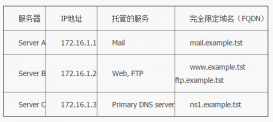一. 安装
MemcacheQ 是一个简单的分布式队列服务,它的运行依赖于BerkeleyDB 和 libevent,所以需要先安装BerkeleyDB和libevent.
Berkeley DB 4.7 or later
Download from <http://www.oracle.com/database/berkeley-db/db/index.html>
How to install BerkeleyDB:
|
1
2
3
4
5
6
|
$tar -xvzf db-5.3.21.tar.gz$cd db-5.3.21/$cd build_unix/$../dist/configure$make$make install |
安装BerkeleyDB时,可以手动指定安装路径:
../dist/configure --prefix=/usr/local/berkeleydb
不指定的话,默认安装在:/usr/local/BerkeleyDB.5.3
libevent 1.4.x or later
先检查libevent 是否已经安装:
#rpm -qa|grep libevent
libevent-devel-2.0.10-2.fc15.x86_64
libevent-2.0.10-2.fc15.x86_64
libevent-2.0.10-2.fc15.i686
或者:
ls -al /usr/lib |grep libevent
如果还没有安装:
Download from <http://monkey.org/~provos/libevent/>
How to install libevent:
|
1
2
3
4
5
|
$tar -xvzf libevent-1.4.x-stable.tar.gz$cd libevent-1.4.x-stable$./configure$make$make install |
安装libevent时,可以手动指定安装路径:
./configure --prefix=/usr/local/libevent
不指定的话,默认安装在:/usr/lib64(64位系统)或者/usr/lib(32位系统)
memcacheQ
下载软件包:http://code.google.com/p/memcacheq/downloads/list
解压缩,cd进目录
|
1
2
3
|
./configure --enable-threadsmakemake install |
configure 时,如果libevent 不是安装在默认目录,需--with--libevent=/usr/local/libevent指定libevent的安装目录
若没有将
/usr/local/lib
/usr/local/BerkeleyDB.5.3/lib
添加进/etc/ld.so.conf 并运行 /sbin/ldconfig 则需--with-bdb=/usr/local/BerkeleyDB.5.3 指定berkeleyDb库的路径
二.使用
启动memcacheQ
使用memcacheq -h 的命令来查看命令行选项
启动memcacheq:memcacheq -d -u nobody -r -H /tmp/memcacheq -N -R -v -L 1024 -B 1024 > /tmp/mq_error.log 2>&1
启动时需-u 参数,指定运行memcacheQ的用户,且指定的用户必须有数据文件的读写权限,如这里的/tmp/memcacheQ目录,否则不能启动
命令行使用memcacheQ
telnet 127.0.0.1 22202
Trying 127.0.0.1…
Connected to 127.0.0.1.
Escape character is ‘^]'.
只有两个命令可以在命令行下使用memcacheQ
写对列:
set <queue name> <flags> 0 <message_len>\r\n
<put your message body here>\r\n
STORED\r\n
取出队列:
get <queue name>\r\n
VALUE <queue name> <flags> <message_len>\r\n
<your message body will come here>\r\n
END\r\n
与memcache协议基本一致,只是把key name换成queue name,而且在set的命令中,忽略了expire_time的参数。mq的数据存储是存在berkeleyDB中,做了持久化存储,没有内存的过期时间。
示例:
telnet 127.0.0.1 22202
Trying 127.0.0.1…
Connected to 127.0.0.1.
Escape character is ‘^]'.
set q4 0 0 5
hello
STORED
set q4 0 0 5
world
STORED
stats queue
STAT q4 2/0
END
get q4
VALUE q4 0 5
hello
END
stats queue
STAT q4 2/1
END
三.安装使用过程中可能出现的错误
1.编译出现错误:checking for library containing db_create... no
configure: error: cannot find libdb.so in /usr/local/BerkeleyDB.5.3/lib
需要修改 configure 中的BerkeleyDB中的预编译参数vim configure找到bdbdir="/usr/local/berkeleydb"改为
bdbdir="/usr/local/BerkeleyDB.5.3"再次编译
2.configure: error: cannot find libdb.so in /usr/local/BerkeleyDB.5.3/lib
出现此错误的原因在于没有安装BerkyleyDb,安装即可
3./usr/local/memcacheq/bin/memcachq -h
运行报:
memcacheq: error while loading shared libraries: libdb-5.3.so: cannot open shared object file: No such file or directory
解决方法:ln -s /usr/local/BerkeleyDB.5.3/lib/libdb-5.3.so /usr/lib/libdb-5.3.so
注:在64位操作系统中,需执行
ln -s /usr/local/BerkeleyDB.5.3/lib/libdb-5.3.so /usr/lib64/libdb-5.3.so
使用memcacheq做异步队列,做个简单的生产者-消费者模型。生产者将数据写入mq中,消费者异步去队列中去取数据,进而进一步的消费处理数据。
|
1
2
3
4
5
6
7
8
9
10
11
12
13
14
15
16
17
18
19
20
21
22
23
24
25
26
27
28
29
30
31
32
33
34
35
36
37
38
39
40
|
#!/usr/bin/env python#-*- coding:utf8 -*- import sysimport timeimport random import memcache mc = memcache.Client(["%s:%s"%("127.0.0.1", "22202")])queue_name = "q1"def putter(): count = 0 while True: data = "hello%d"%(count) mc.set(queue_name, data) print "put ", data count += 1 time.sleep(random.randint(1, 10)) def process_data(data): print "processing data :", data def getter(): while True: data = mc.get(queue_name) if data: process_data(data) else: print "no message, sleep for a while ..." time.sleep(30) if __name__ == "__main__": if len(sys.argv) != 2: print "Wrong arg numbers" else: cmd = sys.argv[1] if cmd == "put": putter() elif cmd == "get": getter() else: print "wrong cmd" |
在使用时,开两个终端模拟两个进程,在一个终端中运行
python mqdemo.py put
来模拟生产者;另一个终端中运行
python mqdemo.py get
模拟消费者。














